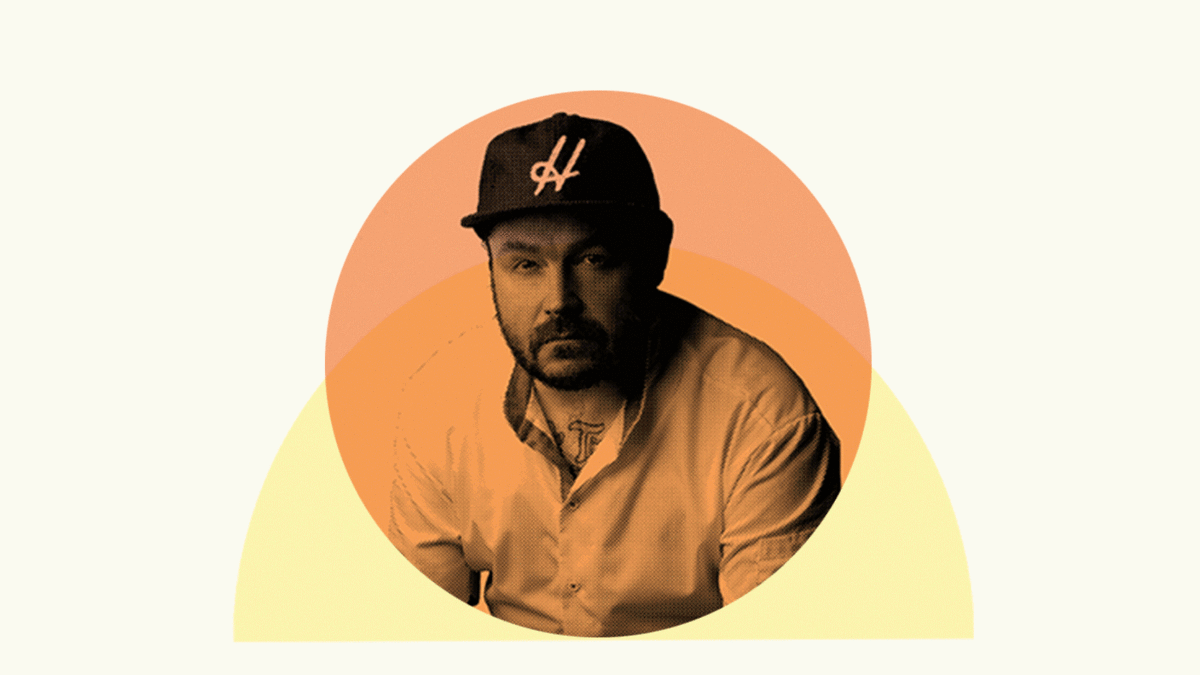Santé Et Nutrition
What Happens When Five Sober Chefs Share a Kitchen? | Healthyish
Published
6 années agoon
By
admin
[ad_1]
Fifteen minutes into my conversation with bartender Evan Zimmerman, I realize he isn’t going to eat half of the tomato focaccia square I purchased at Ellē in Washington, D.C., so I slide the plate back toward me and listen to him while I finish the rest. He can’t eat because his hands are occupied, mimicking how he might pulverize salted peanuts and use them to season the creamy head of nitrogen-charged Coca-Cola.
Zimmerman will serve the drink he’s describing, or something like it, at a highly anticipated non-alcoholic-cocktail-paired dinner in Portland this weekend, alongside a roster of some of the most well-regarded chefs in the country. (All 72 tickets for the dinner were purchased within two minutes of going on sale, at a price of $225 each.) Sean Brock, Gregory Gourdet, Gabriel Rucker, Michael Solomonov, and Andrew Zimmern will each prepare a course, and Zimmerman will create a non-alcoholic cocktail to match.
The chefs share high achievements: altogether over a dozen restaurants, 13 James Beard awards, three Top Chef appearances (including one competition finalist), a hugely popular food and travel show, and multiple cookbooks. They also all share a lifestyle: sobriety.
Brock, whose name was once used as a verb by line cooks in need of a few beers post-shift (“Let’s get Brocked”), now starts his day with a meditation session followed by a bowl of berries with macadamia milk. Gourdet, who hit bottom freebasing cocaine for three days with no sleep, runs marathons and maintains a strict gluten- and dairy-free diet. When I visit Solomonov, a former crack addict, at his restaurant Zahav in Philadelphia, he asks if I brought running shoes and tells me to meet him at 8:30 the next morning. We take a brisk walk before his all-staff meeting.
These are, by all accounts, changed men. And with the upcoming dinner, part of the Feast Portland food festival, they’re joining forces for the first time.
Rucker, the Portland-based chef and owner of Le Pigeon and Little Bird Bistro and organizer of the dinner, wants to challenge assumptions about what the life of a successful chef looks like. “A lot of young cooks look up to chefs in the press, and the common stigma is, ‘I need to be a badass, I need to be able to drink and hold my liquor and then work through the hangover.”
Rucker is lucky: He maintained a marriage and a business through years of using alcohol to come down and cocaine to stay up, and his bottom—the term used to refer to an addict’s lowest point—was relatively high. One morning, after an evening spent passed out on the couch at home when he was supposed to be dining with his family and neighbors, he decided it was time to make a change. He called his father, who is sober, and asked to go to an AA meeting with him. “He said, ‘I’ll take you down the path with me, but you don’t get to go back now.’ And I haven’t gone back.” Five years into his sobriety, Rucker goes goes to AA once a week, talks to his sponsor every day, and hits the gym most mornings.
“My oldest son is seven, and he doesn’t remember me drinking,” says Rucker. “He’s not gonna grow up remembering me as a drinking dad.”
According to the Substance Abuse and Mental Health Services Administration, the highest rates of illicit drug use are found in the accommodations and food services industry, and workers in that industry have the highest rates of substance use disorder: 16.9 percent compared to 9.5 percent on average across other industries. The highest rates of heavy alcohol use are in the mining and construction industries, with accommodations and food services coming in third.
« How do you even gauge what’s appropriate when partying is part of the culture of your business?” says Solomonov.
Of course, substance abuse and mental health are linked. Last year, Mental Health America (MHA) published the results of its Work Health Survey across 19 industries in the United States. The healthcare, financial services, and the non-profit industries scored in the top 10 percent; manufacturing, retail, and food and beverage scored in the bottom 10 percent.
« This industry can tear you down if you let it, » says Brock, founding chef of Husk restaurants in Charleston, Nashville, Greenville, and Savannah. « It tore me down. » Alcoholism and workaholism were problems for him in equal measure, and he says that industry culture rewarded those behaviors. « It’s almost like you leave society a little bit. There was a period in my life where I didn’t have a TV, I didn’t have a couch–I didn’t want a TV or a couch. I was working seven days a week, nonstop, I had no idea what was going on outside—I couldn’t have told you who the president was, probably—and that’s what I thought my happy place was. Well, that wasn’t true. »
Brock entered a rehab clinic in Arizona in January 2017 and credits the six-week program with not only getting him clean, but also opening him up. “I used to walk into the kitchen and no one would say a word, » he says. « They were scared to death, which is the way I wanted it, but once I started showing vulnerability, everything changed.”
As the #metoo movement has made waves from film sets to boardrooms and beyond, the food industry is having its own reckoning, and drinking is a big part of that conversation. « How do you even gauge what’s appropriate when partying is part of the culture of your business?” says Solomonov. He doesn’t offer his staff shift drinks anymore. “And you’re obviously never going to see me fucked up at the bar with my employees.” Solomonov got sober in 2008, five years after the death of his brother. During the time in between, the chef had cloaked himself in a miasma of crack cocaine, heroin, and Scotch so thick it repelled the grief.
Andrew Zimmern, the four-time James Beard Award winner and host of Bizarre Foods on the Travel Channel, remembers the day his own life changed: January 28, 1992. « I was trying to kill myself in a flophouse hotel after being homeless for a year and thinking that I was a loser in life, » he says. He ended up waking up in a treatment center in Minnesota instead. During the first five years he was sober, Zimmern thought a lot about patience, tolerance, and understanding. « Those are the things that were making a difference in my life, and it hit me like a ton of bricks one day that I was working in an industry that needed help with that. And then I realized, the world needs help with that. »
« It’s people who have been in the program and other sober chefs who showed me that life can be better, » says Gourdet.
For those struggling with mental health or substance abuse issues, resources are increasing. Indigo Road Hospitality owner Steve Palmer and Mickey Bakst of the Charleston Grill founded Ben’s Friends, a kind of Alcoholics Anonymous for people working in the food and beverage industry, in 2016. There are now chapters in Charleston, Atlanta, and Raleigh, which is run by chef Scott Crawford of Crawford and Son. Palmer and Crawford managed a no-alcohol-allowed “chill space” at last year’s Atlanta Food & Wine Festival.
Brock teaches Talking Boundaries and Listening Boundaries, a communication structure he learned at the Meadows, to his employees. « The idea is to still be compassionate and empathetic toward that person even though they called you an asshole, » he says. He wants to write a guide on surviving the restaurant industry, and he may soon have time. Brock recently announced that he will no longer be involved with Minero, McCrady’s, or McCrady’s Tavern, but will stay on at all Husk locations as a culinary advisor.
Matthew Jennings, a Boston-based chef who lost 175 pounds and « regained [his] addiction to fitness » after getting sober two years ago, closed his restaurant Townsman in July to launch Full Heart Hospitality, a consulting group that will tackle restaurant menu engineering, recipe development, design, and internal strategy with wellness and social responsibility in mind. « What I’m really trying to do is write a new manifesto for operations that stresses focusing on people first and productivity second, » says Jennings, who is not part of the dinner but is outspoken about his newly healthy habits. « Empathy will dictate the whole conversation. »
Zimmern says he finds more Fortune 100 CEOs quoting University of Houston research professor and author Brené Brown these days than Tony Robbins’ Personal Power program. “She really equates empathy with happiness: If you want to be truly happy, then you have to live life on an empathetic basis,” he says. “When you apply that to the workplace, you end up with a healthier environment in which morale and productivity are increased. » At his own companies, that means one-on-one meetings and transparency at all levels. “Everyone has the same financial awareness and strategic awareness of the business, from interns to board members.”
Gourdet, a former Top Chef contestant and the culinary director for the Departure restaurants in Portland and Denver, tried rehab a couple of times before he got finally sober through Alcoholics Anonymous nine months after moving to Portland. « It’s people who have been in the program and other sober chefs who showed me that life can be better, » he says. « So for me, it’s extremely important that people who are sober are very vocal about their sobriety and how life can change. »
Alcohol wasn’t the problem for bartender Zimmerman—it was heroin, which he kicked on his own with the help of suboxone and a tightly shut bedroom door—but, as a bartender, he finds not drinking freeing. « It allows for the ability to really fine-tune a drink to better line up with a dish, » he says. September will be high time for plums in Oregon, so he might balance their sweetness and tartness with seaweed for Rucker’s trout course. He’ll pick some meadowsweet flowers and infuse their flavor into carrot juice for Brock’s summer vegetable and cornbread salad. Zimmern’s on the fish course; Zimmerman will juice Granny Smith apples and lightly smoke the results with grapevines, a tart but earthy compliment to shrimp with a Sichuan-style vinaigrette. Solomonov’s lobster-wrapped ribeye cap will be met with the clarified juice of caramelized onions with houjicha, a Japanese green tea, and a touch of molasses. « I know onion juice sounds weird, but with the tea and the molasses, it almost tastes like Madeira, » says Zimmerman. Finally, he’ll serve that carbonated Mexican Coca-Cola with Gourdet’s chocolate and peanut dessert. Too often, he says, non-alcoholic “cocktails” lean on acidity alone. « I want to show that it doesn’t have to be all about shrubs and citrus and fruit. »
None of the men involved in the dinner know what the effect will be, but “if one chef de partie in the US decides to get clean and sober after this, that’s enough of a reason to do it,” says Solomonov. According to Brock, “I want [sobriety] to be something people are proud of rather than shameful of. The simple fact that you have made the decision to take better care of yourself? That should be the proudest moment of your day.”
[ad_2]
Source link
You may like
-


A Butternut Squash Recipe for the Worst Winter Days | Healthyish
-


How to Drink Yerba Mate Like a Pro | Healthyish
-


Most Canadians trust media, but a similar share worry about fake news being weaponized: survey – National
-


Cultured Guru Sauerkraut Makes Me Truly Excited to Drown My Gut in Probiotics | Healthyish
-


Hex Your Ex Then Bake a Cake | Healthyish
-


A Paring Knife Is the Most-Used Knife in My Kitchen, Period

(EN) Les enfants entament une nouvelle année scolaire au cours de laquelle ils vont se faire des amis, s’adapter à leurs nouveaux enseignants et faire face à de nouveaux défis. Certains d’entre eux auront plus de difficultés que d’autres, mais comment savoir si un trouble d’apprentissage ne nuit pas à votre enfant et à sa capacité de réussir ?
L’un des troubles les plus fréquents est la dyslexie. Environ 15 % des Canadiens en sont atteints et pourtant, selon une étude récente, moins d’un tiers d’entre nous serait capable d’en reconnaître les signes.
Bien que la dyslexie ne se guérisse pas, il est possible de la contrôler grâce à une détection précoce et à un enseignement adéquat. C’est pourquoi il est important de pouvoir reconnaître la dyslexie.
Voici ce qu’il faut savoir :
Qu’est-ce que c’est ? La dyslexie est un trouble d’apprentissage qui se caractérise par des difficultés à identifier les sons produits en parlant et à reconnaître les lettres, les mots et les chiffres. Le cerveau interprète mal les sons, les lettres et les chiffres quand il les assemble et en arrive souvent à tout mélanger, ce qui est déroutant pour la personne. La dyslexie touche tout le monde de la même façon, sans considération de genre et peu importe le milieu socio-économique ou l’origine ethnique de la personne.
Que peut-on faire ? Si vous pensez que votre enfant peut être dyslexique, n’attendez pas pour réagir. Il existe de nombreux tests à passer en ligne qui peuvent vous aider à l’identifier. Si vous croyez que c’est le cas, demandez à accéder à des ressources supplémentaires à votre école ou communiquez avec un tuteur spécialisé en littératie structurée. Faites appel à des groupes d’entraide pour en apprendre davantage.
Comment favoriser la réussite ? « Ce n’est pas parce qu’une personne a reçu un diagnostic de trouble d’apprentissage qu’elle ne peut pas réussir dans la vie. Ses apprentissages se font tout simplement d’une manière différente », explique Christine Staley, directrice générale de Dyslexia Canada. « Une détection précoce et un enseignement adéquat en lecture sont essentiels pour contrôler la dyslexie et ouvrir la voie à un brillant avenir. »
Santé Et Nutrition
Les extincteurs portatifs améliorent la sécurité à domicile
Published
4 années agoon
avril 16, 2020By
admin
(EN) Lorsqu’un incendie se déclare, chaque seconde compte. S’ils sont utilisés rapidement et de façon efficace, les extincteurs de feu portatifs peuvent aider à sauver des vies. C’est pourquoi ils font partie de ces éléments importants qui permettent d’assurer votre sécurité et celle de votre famille à domicile.
Suivez ces conseils concernant la façon d’utiliser un extincteur de feu et le meilleur endroit pour l’installer afin d’être prêt en cas d’urgence :
Comparez les caractéristiques. Choisissez un extincteur résidentiel doté d’une goupille de métal et d’un levier de commande, aussi durable qu’un extincteur de qualité commerciale, ainsi que d’un manomètre à code couleur facile à lire afin de vous assurer que l’appareil est chargé. Sachez qu’il n’est pas sécuritaire d’utiliser un extincteur qui a déjà été déchargé, surtout qu’il existe maintenant des extincteurs rechargeables qui peuvent être rechargés par un professionnel certifié si vous avez utilisé l’appareil.
Sachez comment vous en servir : Tous les extincteurs de feu sont vendus avec des instructions d’utilisation. Toutefois, plus de 70 % des consommateurs qui possèdent un extincteur affirment ne pas se sentir à l’aise de le faire fonctionner. Solution pratique et conviviale, le pulvérisateur d’incendie First Alert est une bombe aérosol au design simple qui constitue un dispositif supplémentaire efficace pour les incendies domestiques. Grâce à une buse précise qui permet de pulvériser sur une grande surface, l’utilisateur peut mieux contrôler l’application. De plus, comme il n’y a pas de goupille à tirer ni de levier à serrer, il est possible d’éteindre un incendie rapidement.
Gardez à portée de la main : Lorsque chaque seconde compte, il est essentiel d’avoir un extincteur de feu à proximité afin de réagir rapidement. Il est préférable de placer un extincteur à chaque étage de la maison et dans les pièces où le risque d’incendie est plus élevé, comme la cuisine et le garage. La National Fire Protection Association (NPFA) recommande d’installer des extincteurs à la sortie des pièces afin de les décharger et de vous sauver rapidement par la suite si l’incendie ne peut être maîtrisé.
Sachez quand quitter la maison. Une des composantes d’un plan d’intervention en cas d’incendie consiste à essayer d’éteindre un petit incendie avec un extincteur de feu, mais l’objectif principal doit être l’évacuation de la famille en toute sécurité. Un extincteur n’est pas un substitut à la mise en place d’un plan d’évacuation résidentielle en cas d’incendie, qui doit être pratiqué régulièrement, ni à l’installation d’avertisseurs de fumée fonctionnels dans toute la maison – un à chaque étage et dans chaque chambre, afin de permettre la détection rapide d’un incendie.
Santé Et Nutrition
Comment aider un bébé à développer son goût
Published
4 années agoon
avril 16, 2020By
admin
(EN) Un bébé qui n’est pas encouragé à manger une variété d’aliments dès son plus jeune âge aura de fortes chances à devenir un enfant difficile qui n’acceptera que ses plats préférés, comme des croquettes de poulet ou des hotdogs.
Pour faire en sorte que votre bébé soit ouvert et enthousiaste lorsque vient le moment d’essayer de nouveaux aliments, Nanny Robina, l’une des plus grandes expertes en matière d’éducation des enfants au Canada, vous propose des conseils pour faire de votre un enfant un gourmet aventureux :
- Offrez de la variété. Restez constants et introduisez autant de nouveaux aliments que possible, ainsi que des collations colorées et attrayantes. Offrir au bébé une variété de saveurs et de textures et même des aliments qui fondent facilement dans la bouche est un excellent moyen de s’assurer qu’il demeure ouvert à une variété d’options.
- Mangez avec lui. Asseyez-vous près de votre bébé et mangez à côté de lui. Les enfants imitent souvent ce qu’ils voient, alors manger avec eux et leur montrer à quel point vous appréciez le repas en lançant quelques exclamations du type « Hummm! C’est vraiment bon! » peut avoir d’excellentes répercussions. Nanny Robina ajoute que leur donner des collations faciles à saisir, comme des barres tendres faciles à mâcher, est une autre façon de les encourager à essayer des nouveautés et à manger seuls.
- Soyez patients. Les goûts de votre bébé sont peut-être limités et difficiles à élargir, mais poursuivez son éducation sans baisser les bras. Il est utile de toujours avoir quelques options prêtes à manger sous la main comme les fondants de smoothie PC Biologique : Ils fondent facilement dans la bouche et sont offerts en deux délicieuses saveurs, dont banane, mangue et fruit de la passion, puis banane et fraise.

MAPEI Canada inaugure l’agrandissement de son usine à Laval, au Québec

Le Gala Elles reconnaissent célèbre les femmes remarquables de l’industrie de la construction

Préparez votre maison pour l’hiver afin d’éviter les réclamations d’assurance

Quatre façons de commencer à travailler dans le domaine des ventes

La Commission indépendante soutient le recours de la Cour suprême contre le déni des droits des non-francophones par le Québec

Justin Trudeau est un raciste contre les Noirs et les Premières Nations – 14 signes

Enfants aux études loin de la maison : Trois conseils pour veiller à la santé de leurs finances

Règles et règlements que toutes les entreprises canadiennes doivent connaître

Épargnez pour l’avenir grâce à nos trucs financiers pour la rentrée

Efficacité énergétique: 10 façons économiques de l’améliorer

Ces légendes du baccara vous dévoilent leurs secrets

Retard de vol : le devoir de la compagnie envers ses passagers

Nostalgia and much more with Starburst XXXtreme

Même les jeunes RÉPUBLIQUES se lassent du capitalisme, selon les sondeurs américains — RT USA News

« Aucune crise climatique ne causera la fin du capitalisme ! »

Innovation : le capitalisme « responsable », faux problème et vraie diversion

Vers la fin du Capitalocène ?

Le “capitalisme viral” peut-il sauver la planète ?

Livre : comment le capitalisme a colonisé les esprits

Patrick Artus : « Le capitalisme d’aujourd’hui est économiquement inefficace »

Body found after downtown Lethbridge apartment building fire, police investigating – Lethbridge

Comment aider un bébé à développer son goût

Head of Toronto Community Housing placed on paid leave

Salon du chocolat 2018: les 5 temps forts

This B.C. woman’s recipe is one of the most popular of all time — and the story behind it is bananas

Gluten-Free Muffins

We Try Kin Euphorics and How to REALLY Get the Glow | Healthyish

Man facing eviction from family home on Toronto Islands gets reprieve — for now

Condo developer Thomas Liu — who collected millions but hasn’t built anything — loses court fight with Town of Ajax

27 CP Rail cars derail near Lake Louise, Alta.

Ontario’s Tories hope Ryan Gosling video will keep supporters from breaking up with the party

Renaud Capuçon, rédacteur en chef du Figaroscope

Paris : chez Cécile Roederer co-fondatrice de Smallable

Ontario Tories argue Trudeau’s carbon plan is ‘unconstitutional’

100 years later, Montreal’s Black Watch regiment returns to Wallers, France

Trudeau government would reject Jason Kenney, taxpayers group in carbon tax court fight

Ford Ranger Raptor, le pick-up roule des mécaniques

Los Angeles poursuit The Weather Channel pour atteinte à la vie privée

Le Forex devient de plus en plus accessible aux débutants

The Bill Gates globalist vaccine depopulation agenda… as revealed by Robert F. Kennedy, Jr.
Trending
-

 Anglais5 années ago
Anglais5 années agoBody found after downtown Lethbridge apartment building fire, police investigating – Lethbridge
-

 Santé Et Nutrition4 années ago
Santé Et Nutrition4 années agoComment aider un bébé à développer son goût
-

 Anglais5 années ago
Anglais5 années agoHead of Toronto Community Housing placed on paid leave
-

 Styles De Vie5 années ago
Styles De Vie5 années agoSalon du chocolat 2018: les 5 temps forts
-

 Anglais5 années ago
Anglais5 années agoThis B.C. woman’s recipe is one of the most popular of all time — and the story behind it is bananas
-

 Santé Et Nutrition6 années ago
Santé Et Nutrition6 années agoGluten-Free Muffins
-

 Santé Et Nutrition5 années ago
Santé Et Nutrition5 années agoWe Try Kin Euphorics and How to REALLY Get the Glow | Healthyish
-

 Anglais5 années ago
Anglais5 années agoMan facing eviction from family home on Toronto Islands gets reprieve — for now


